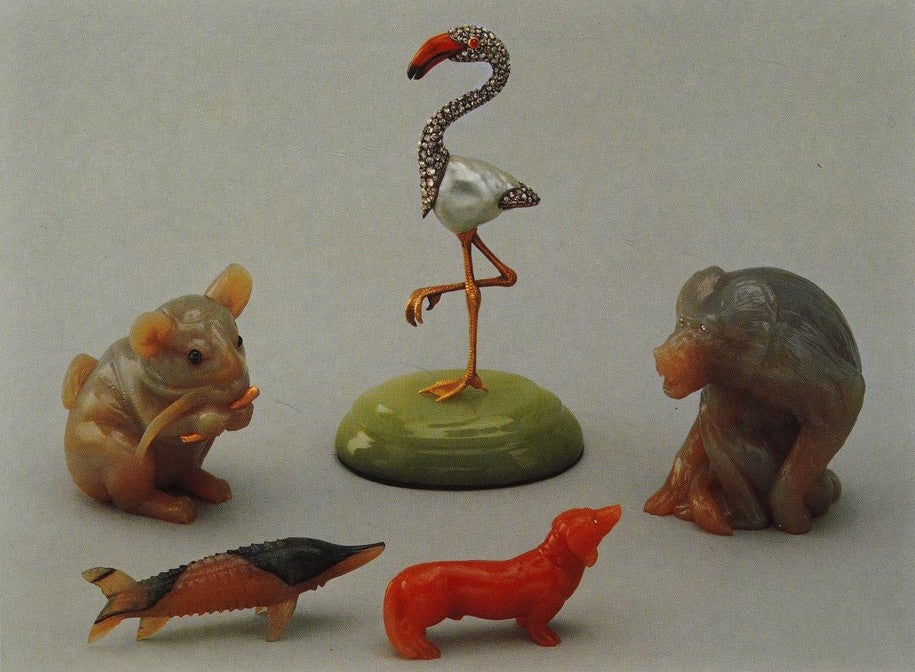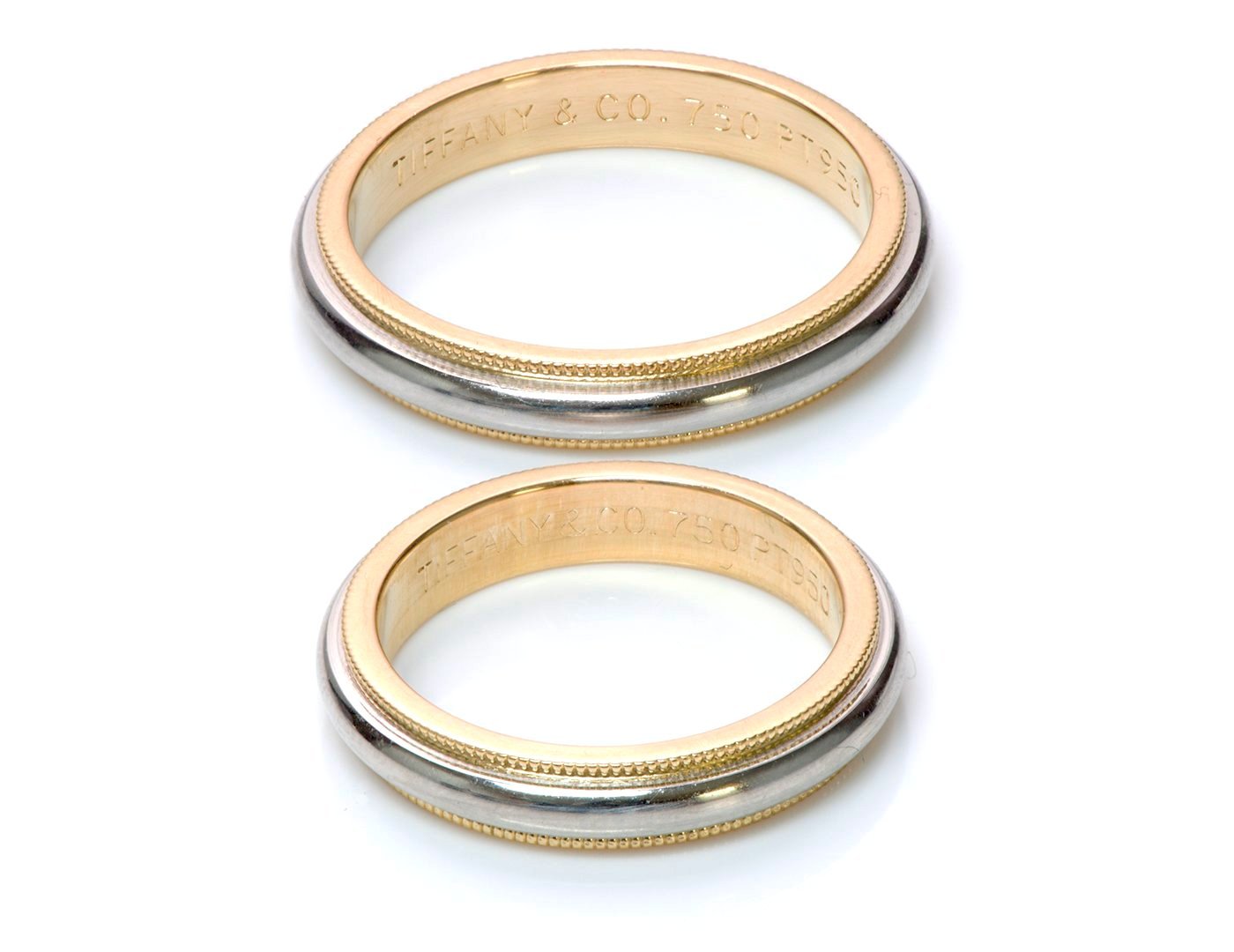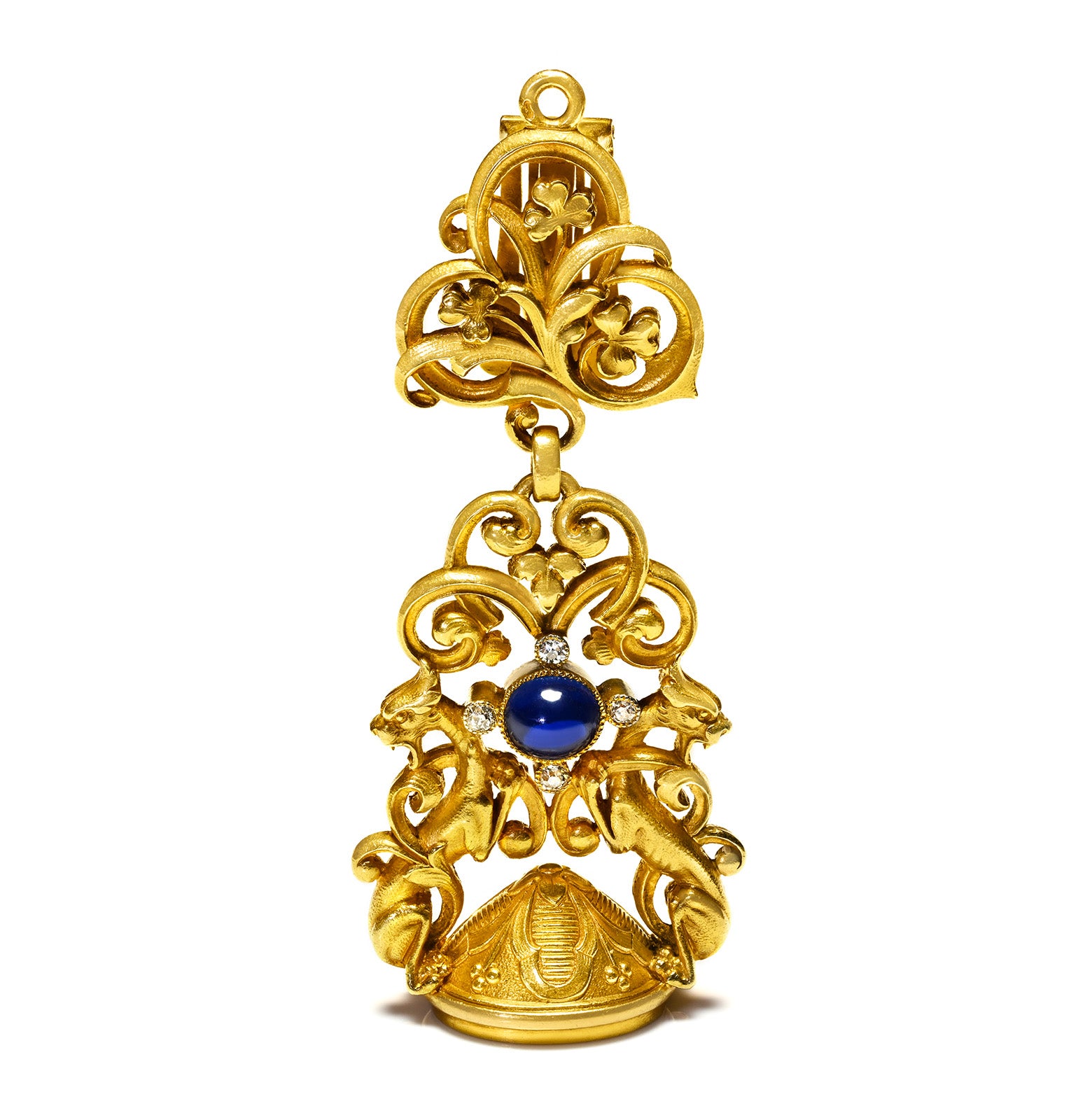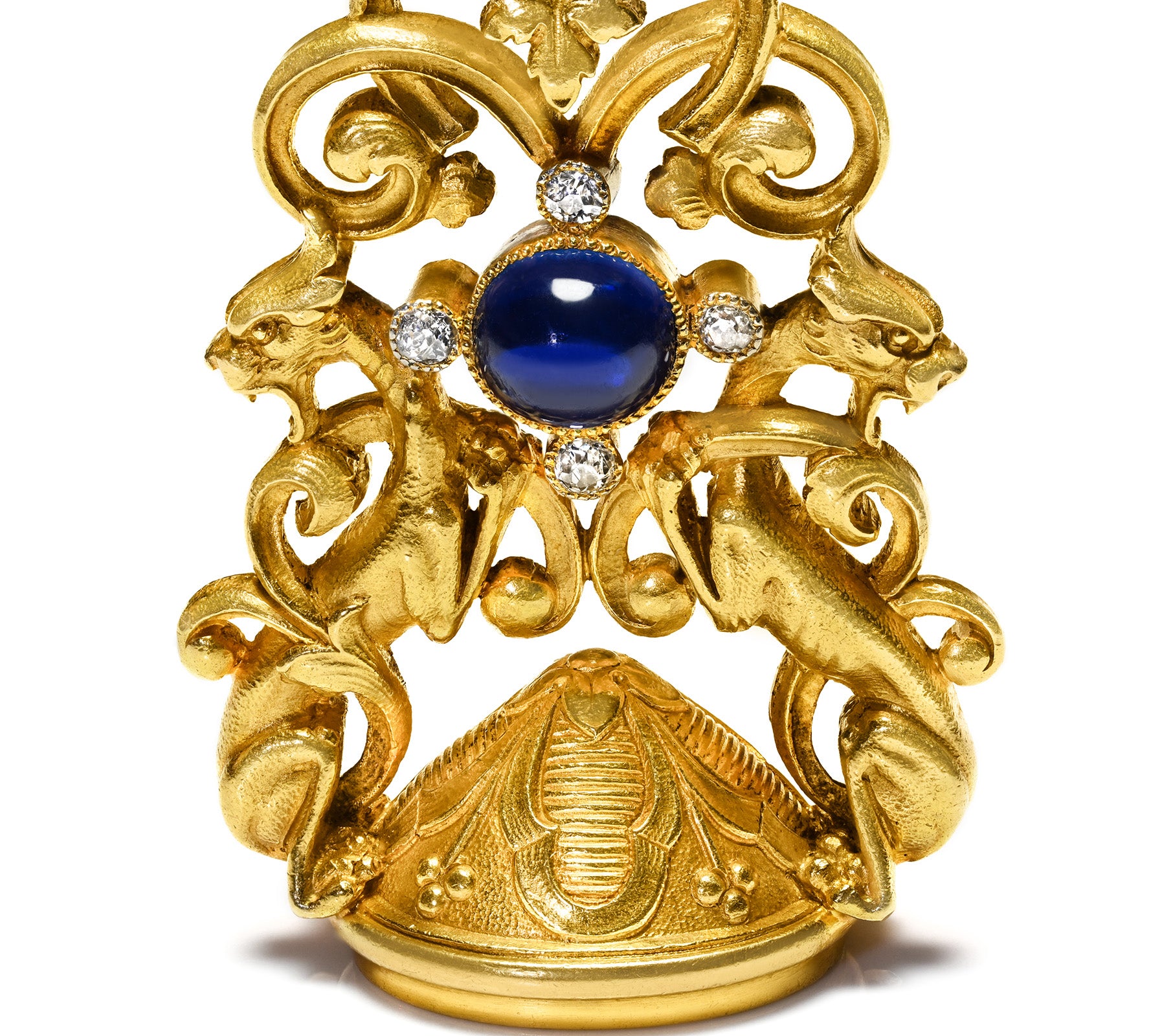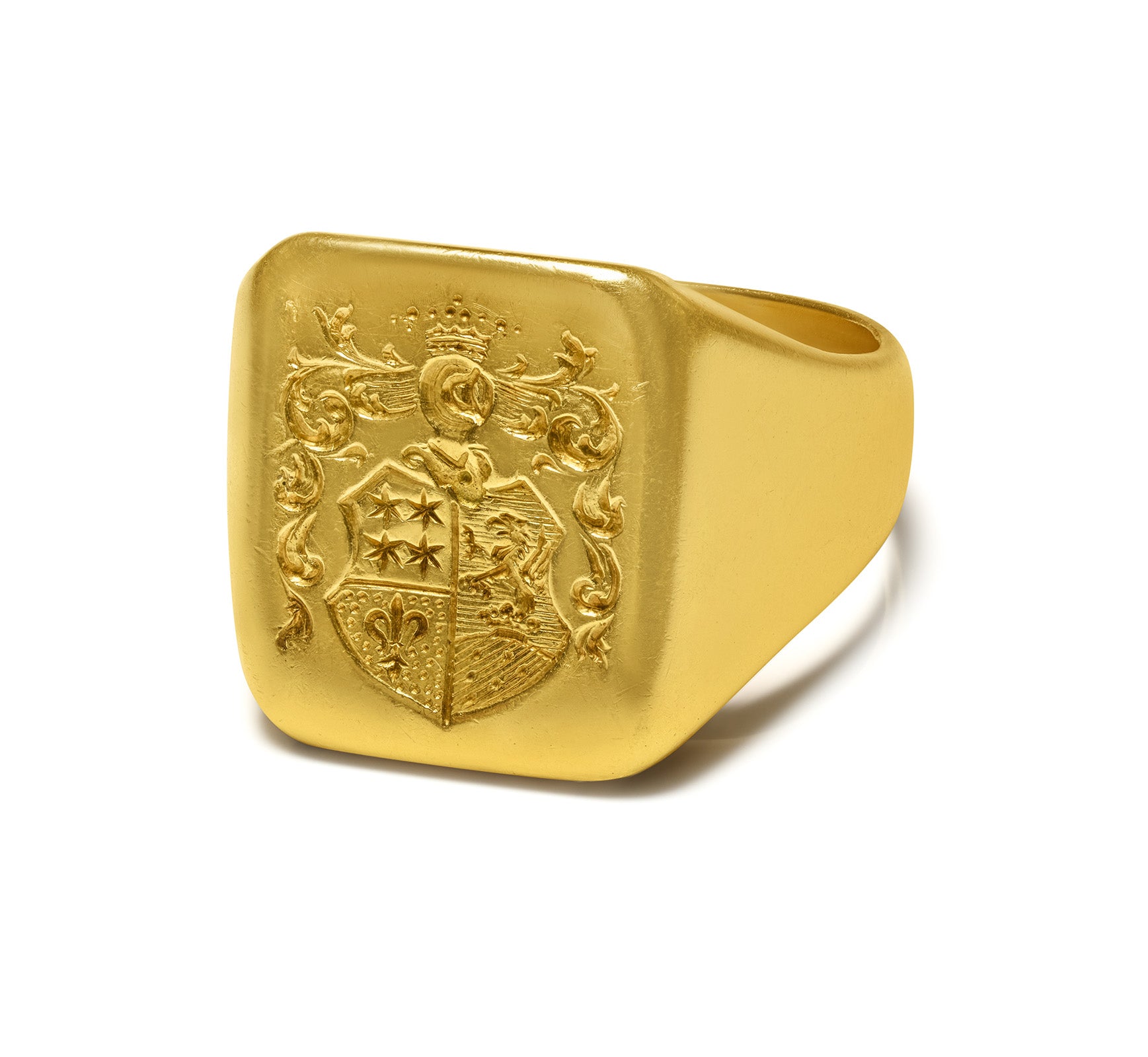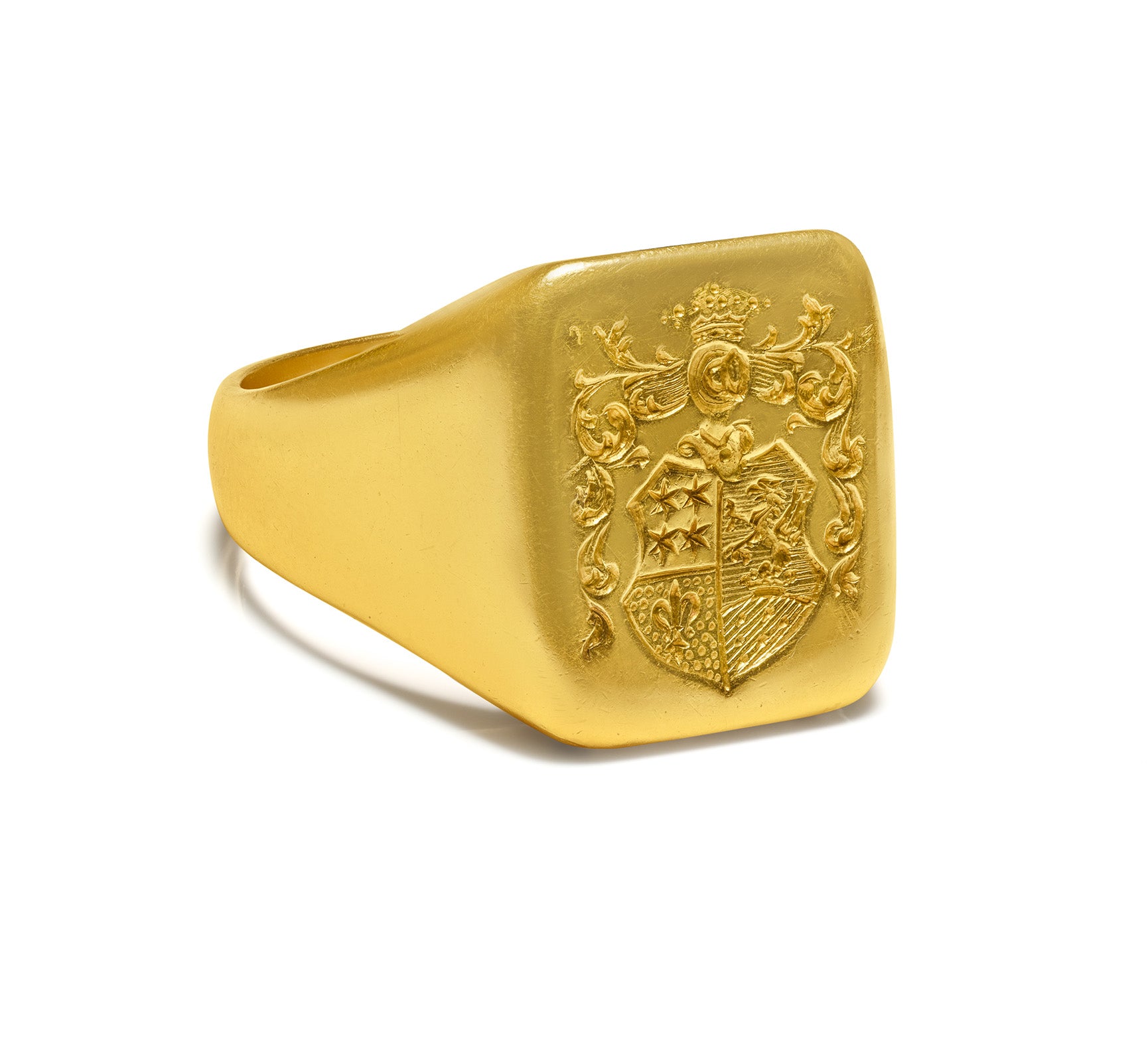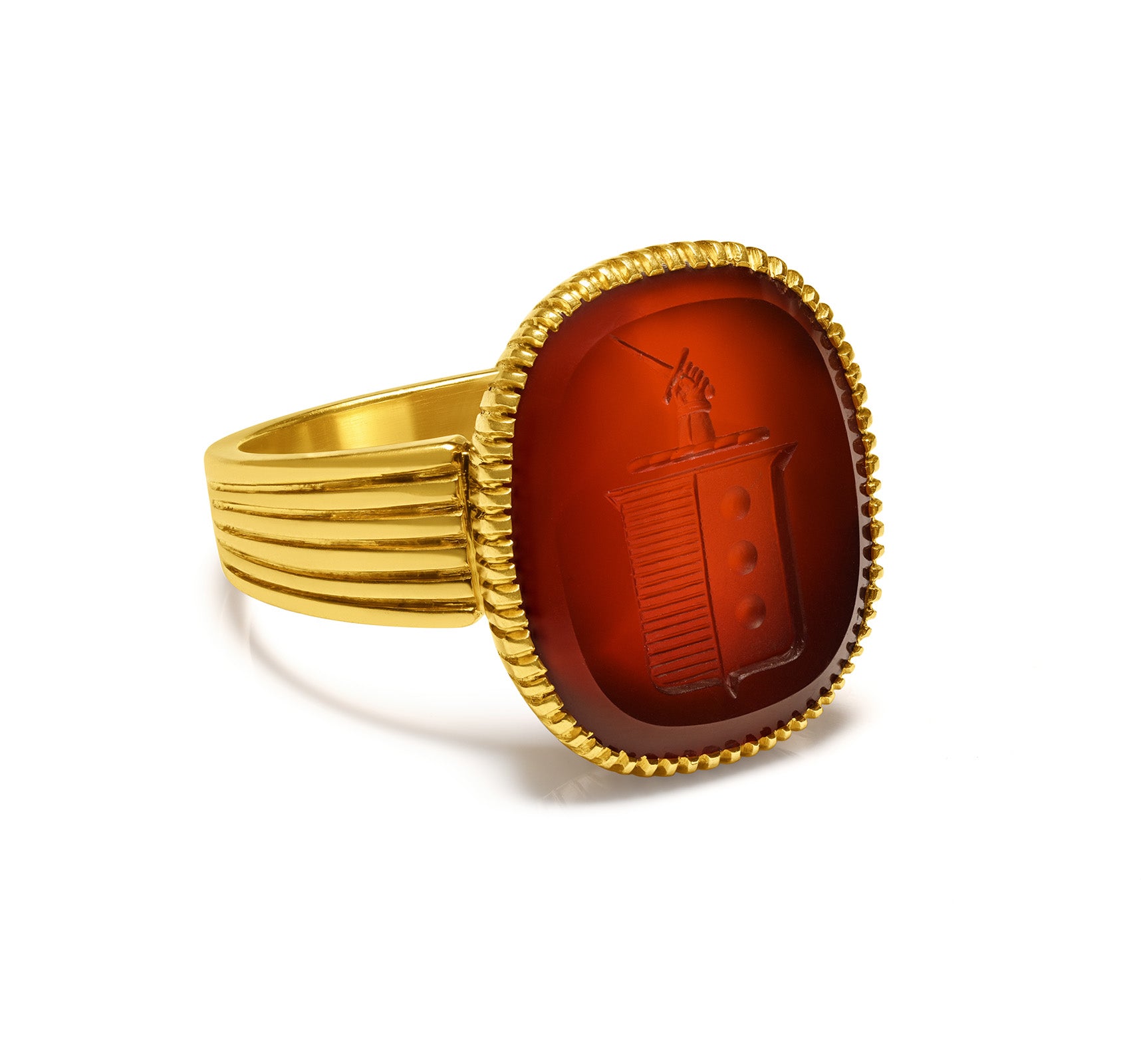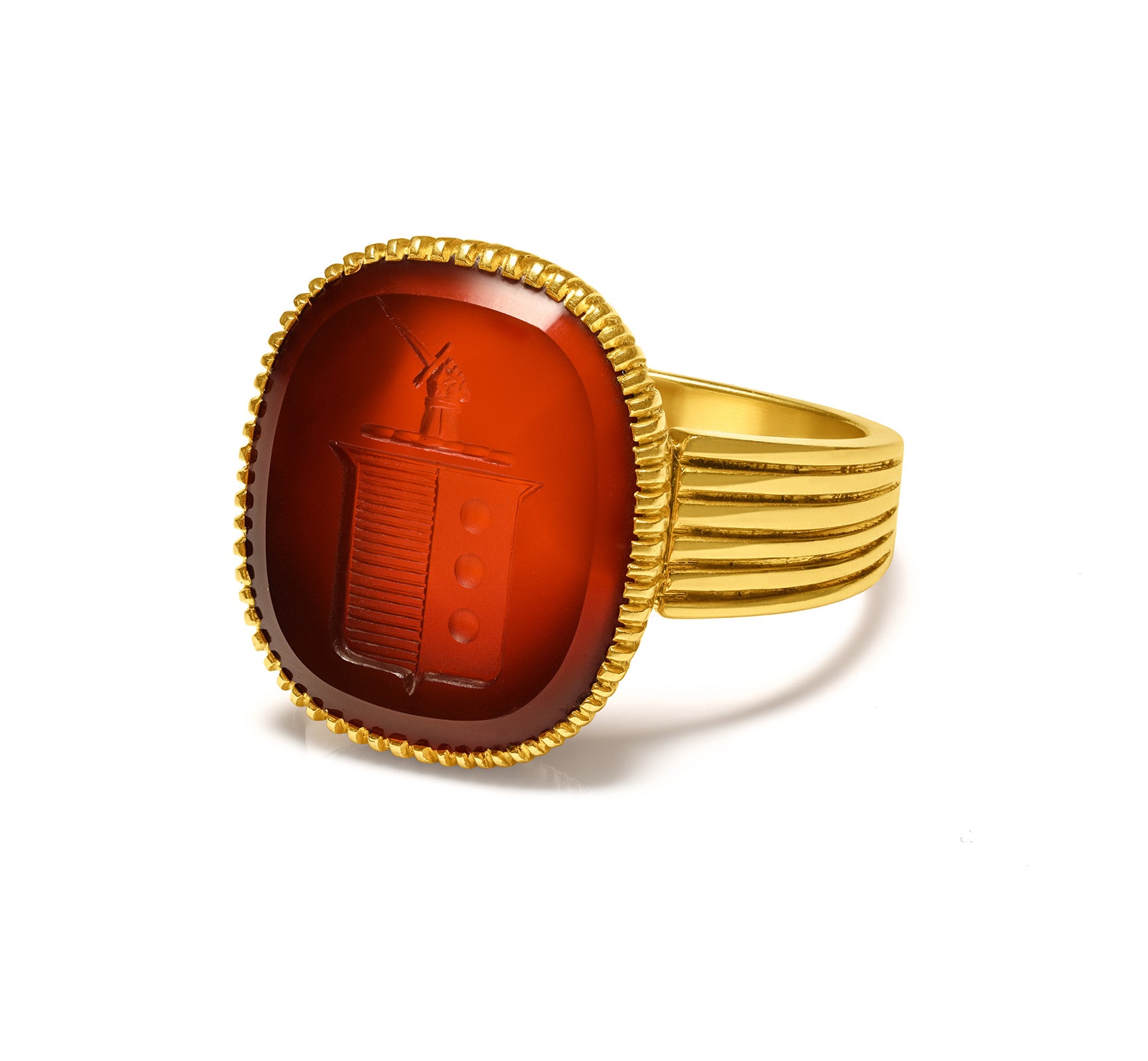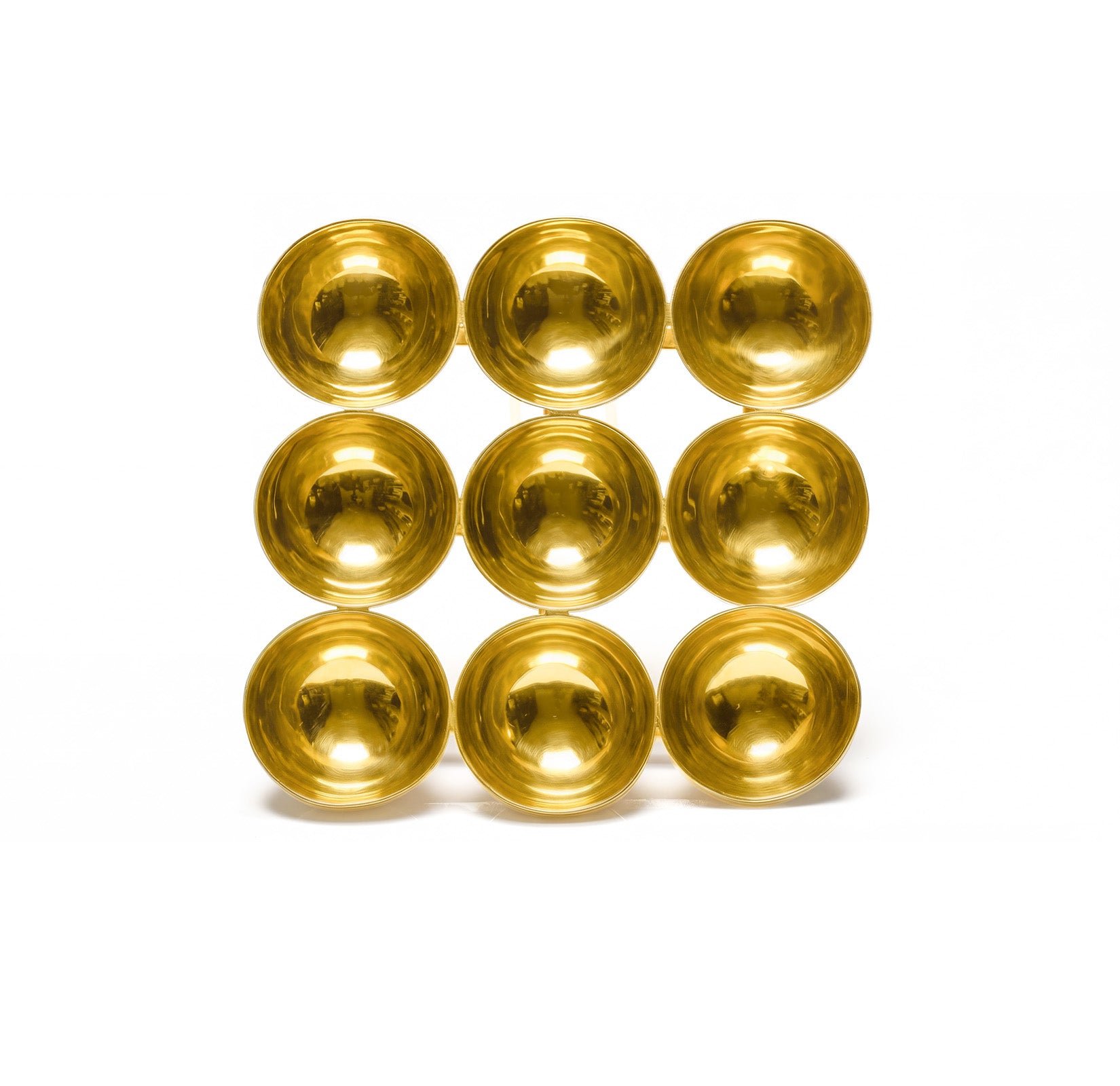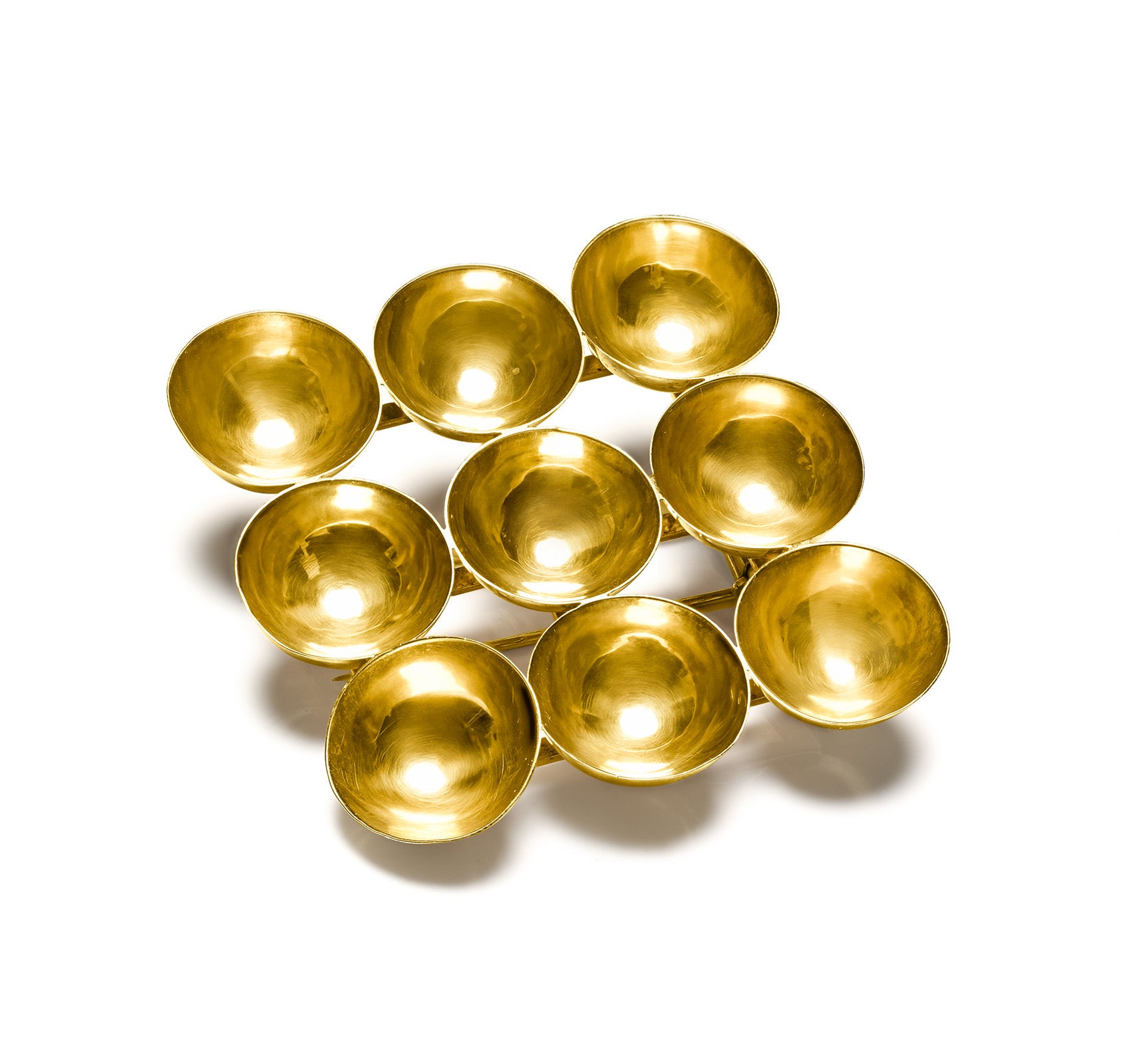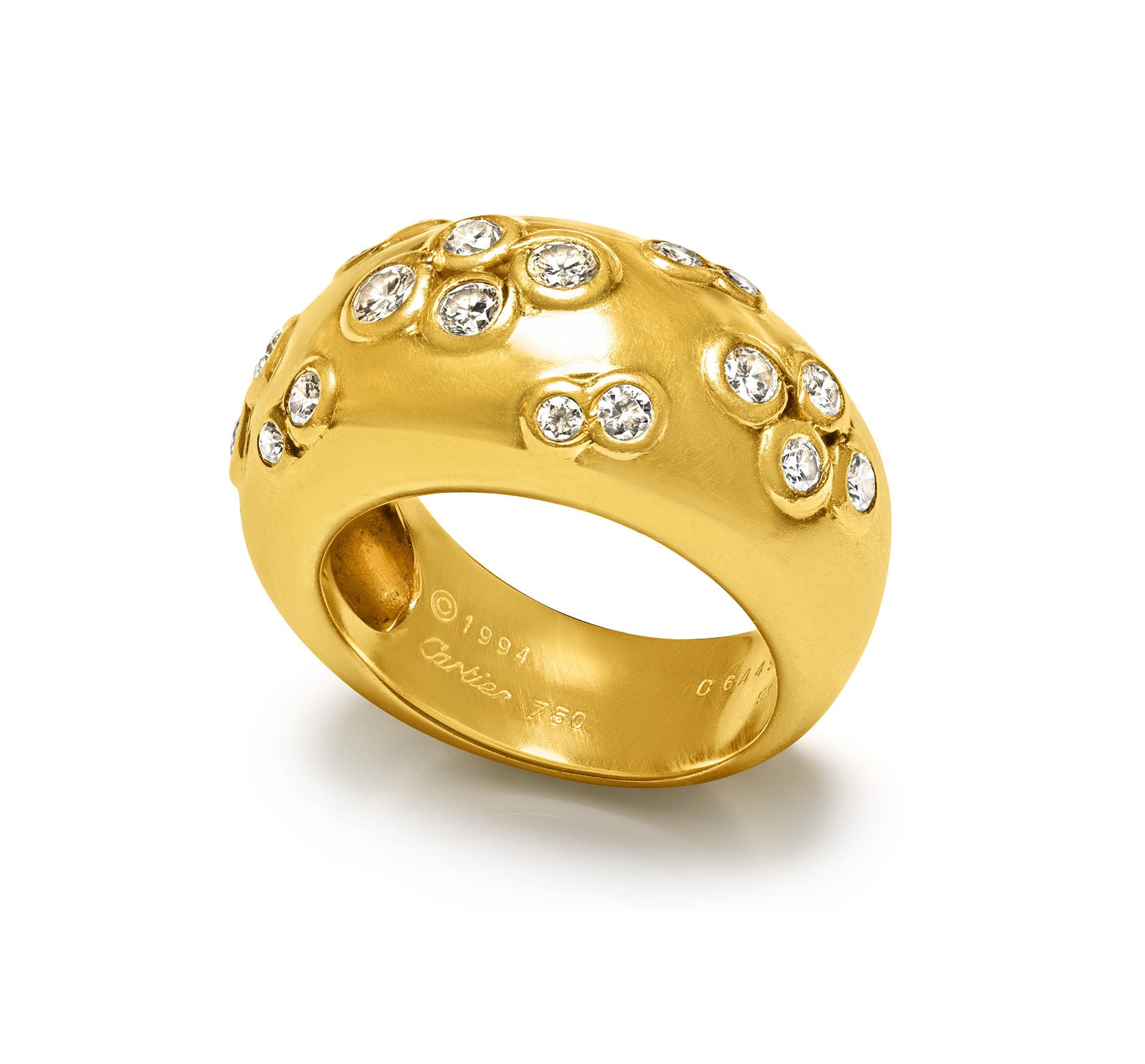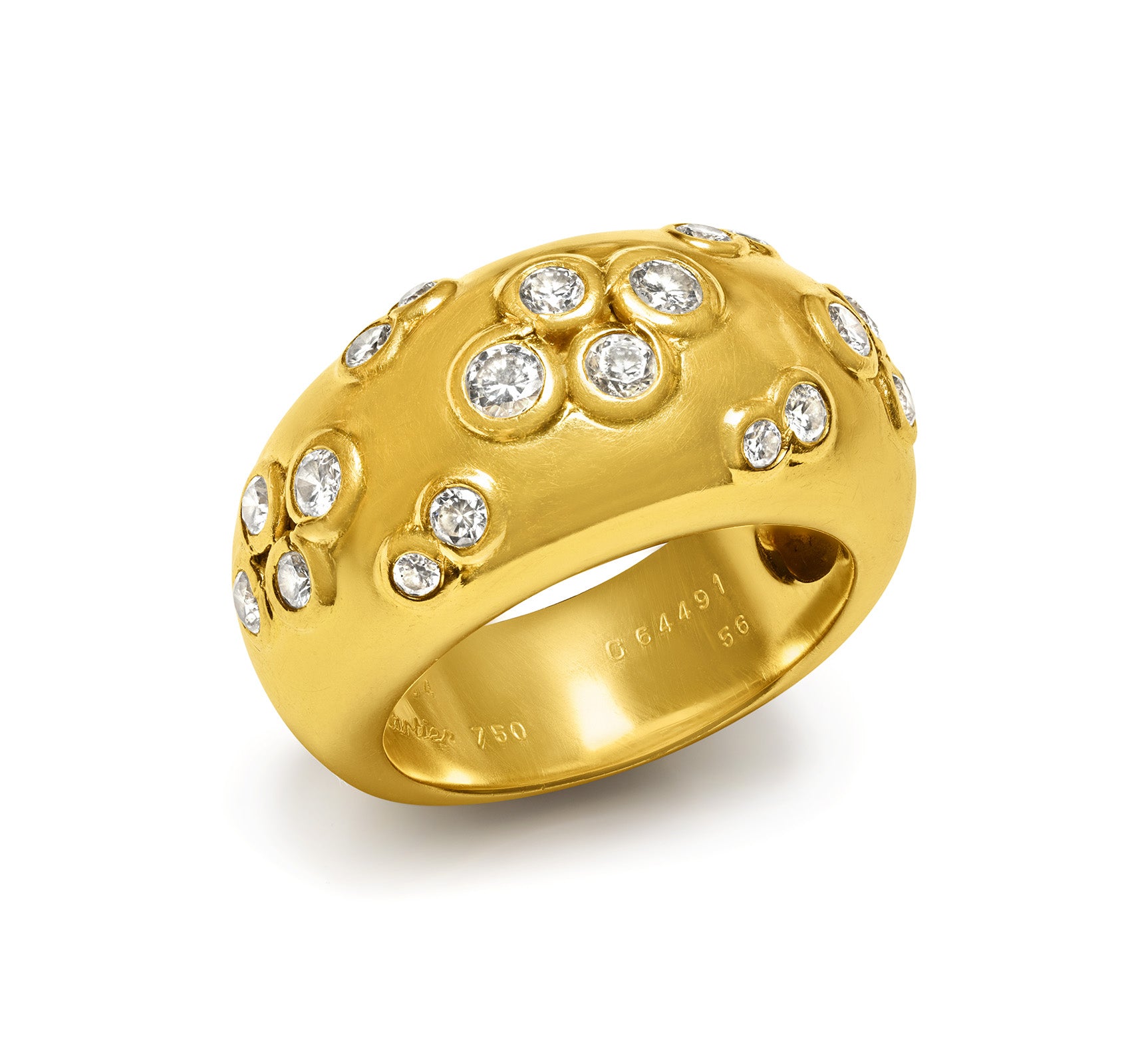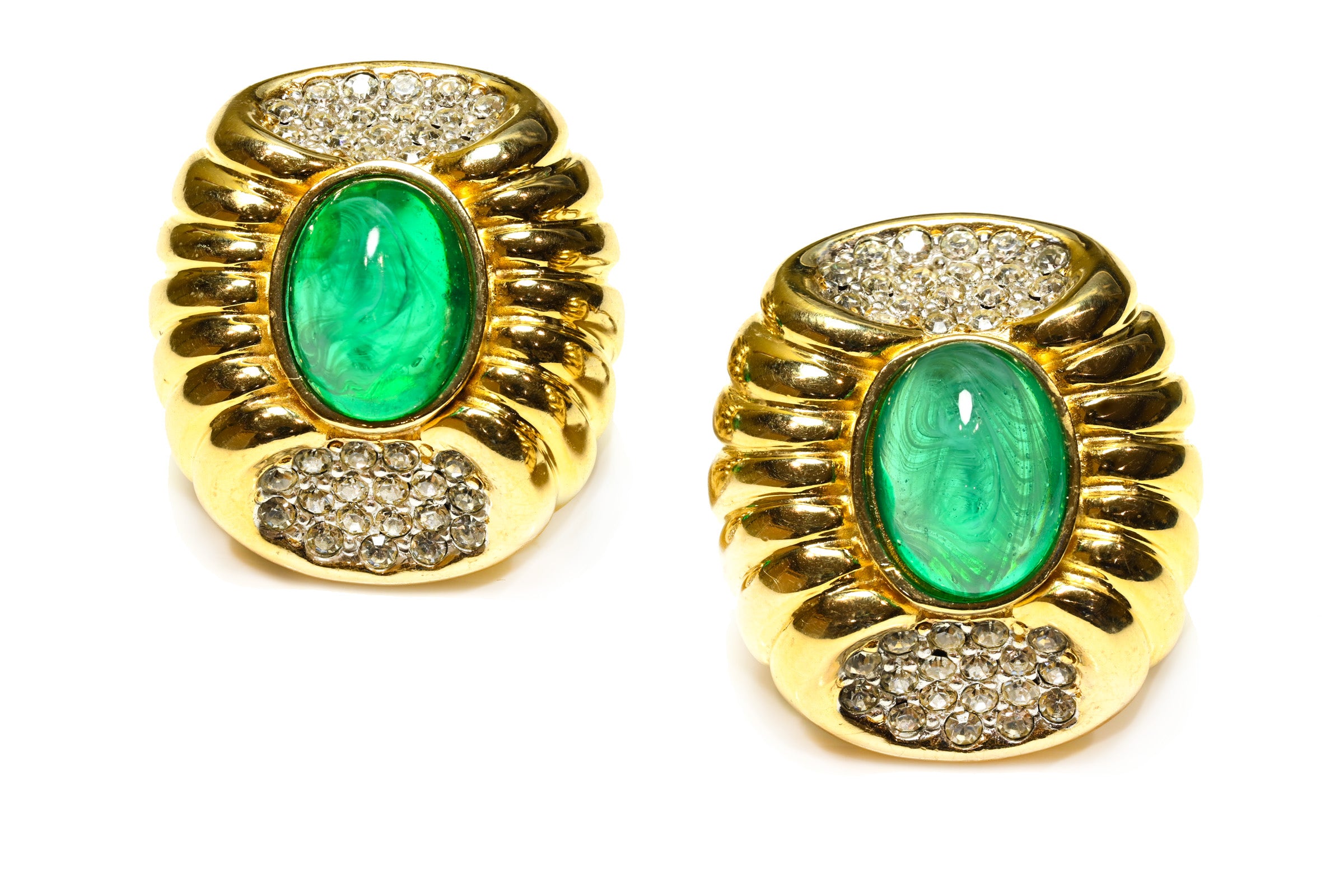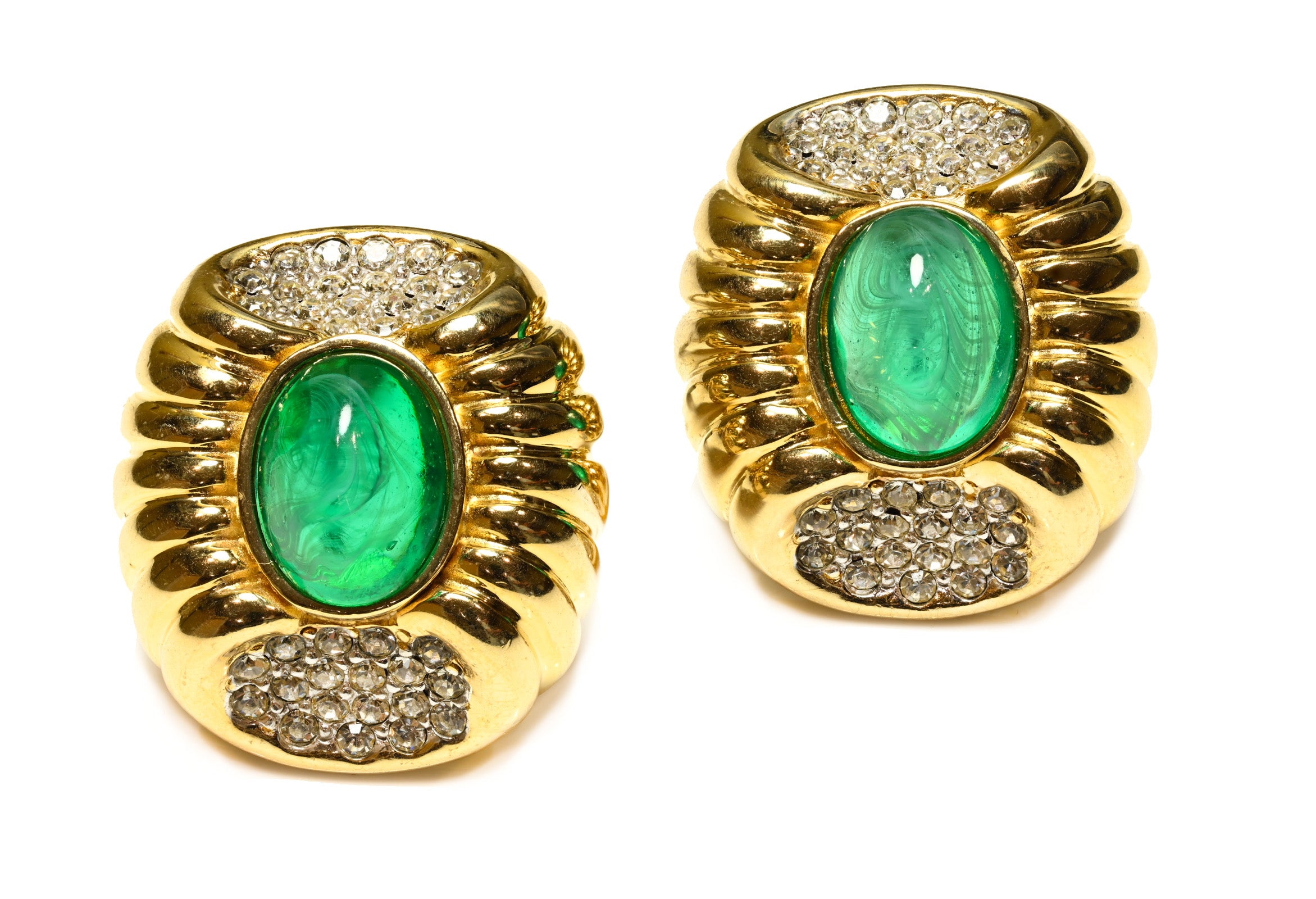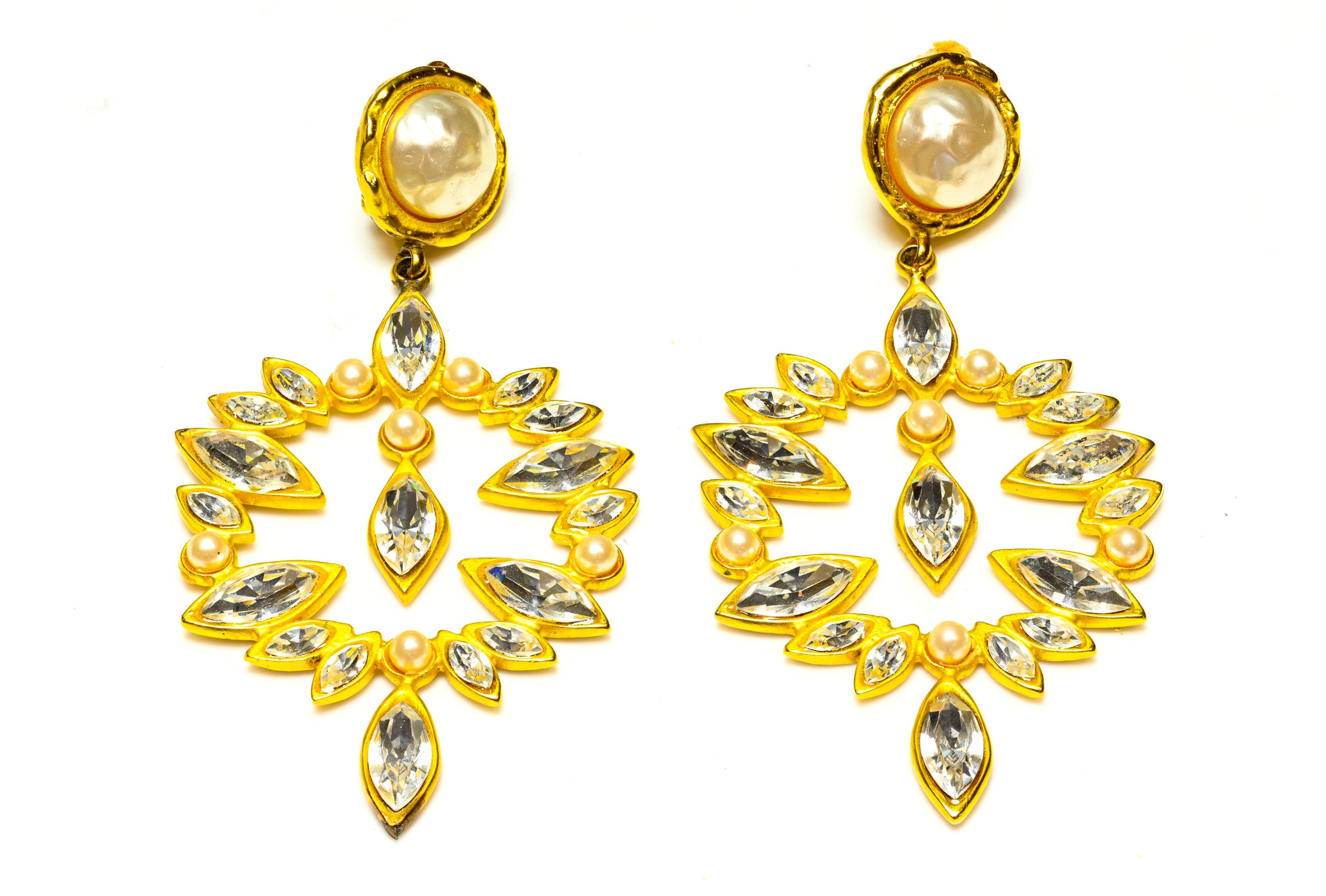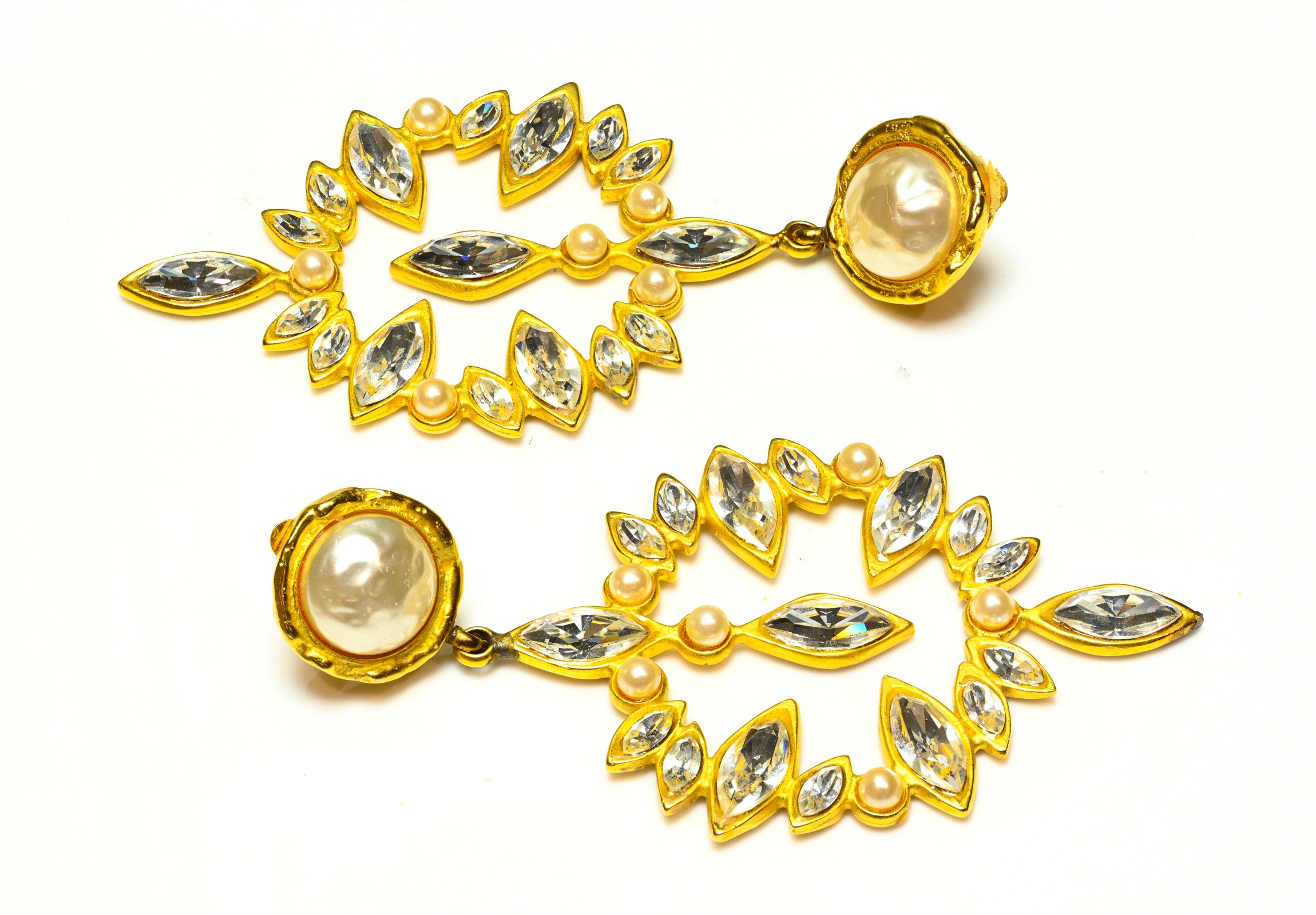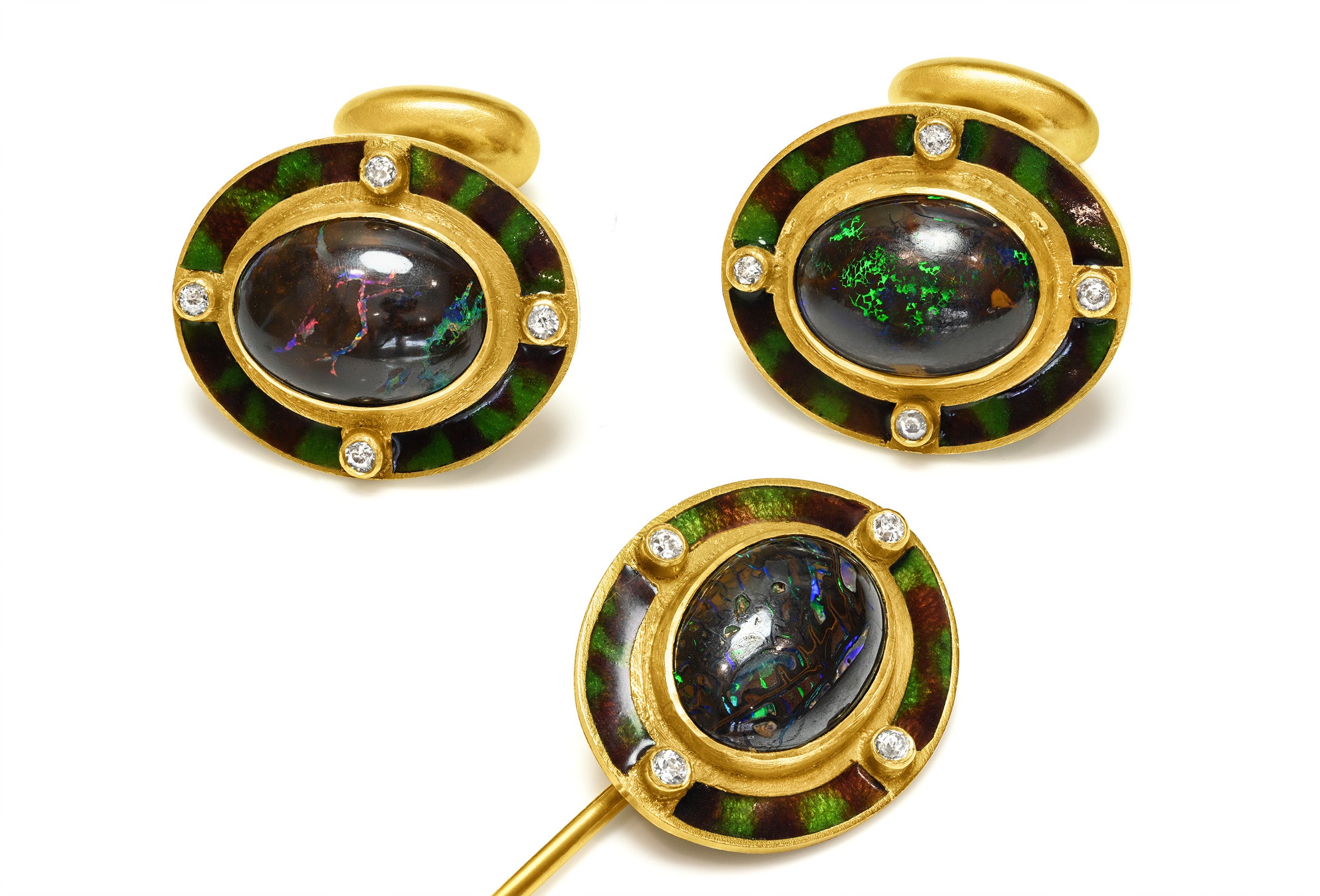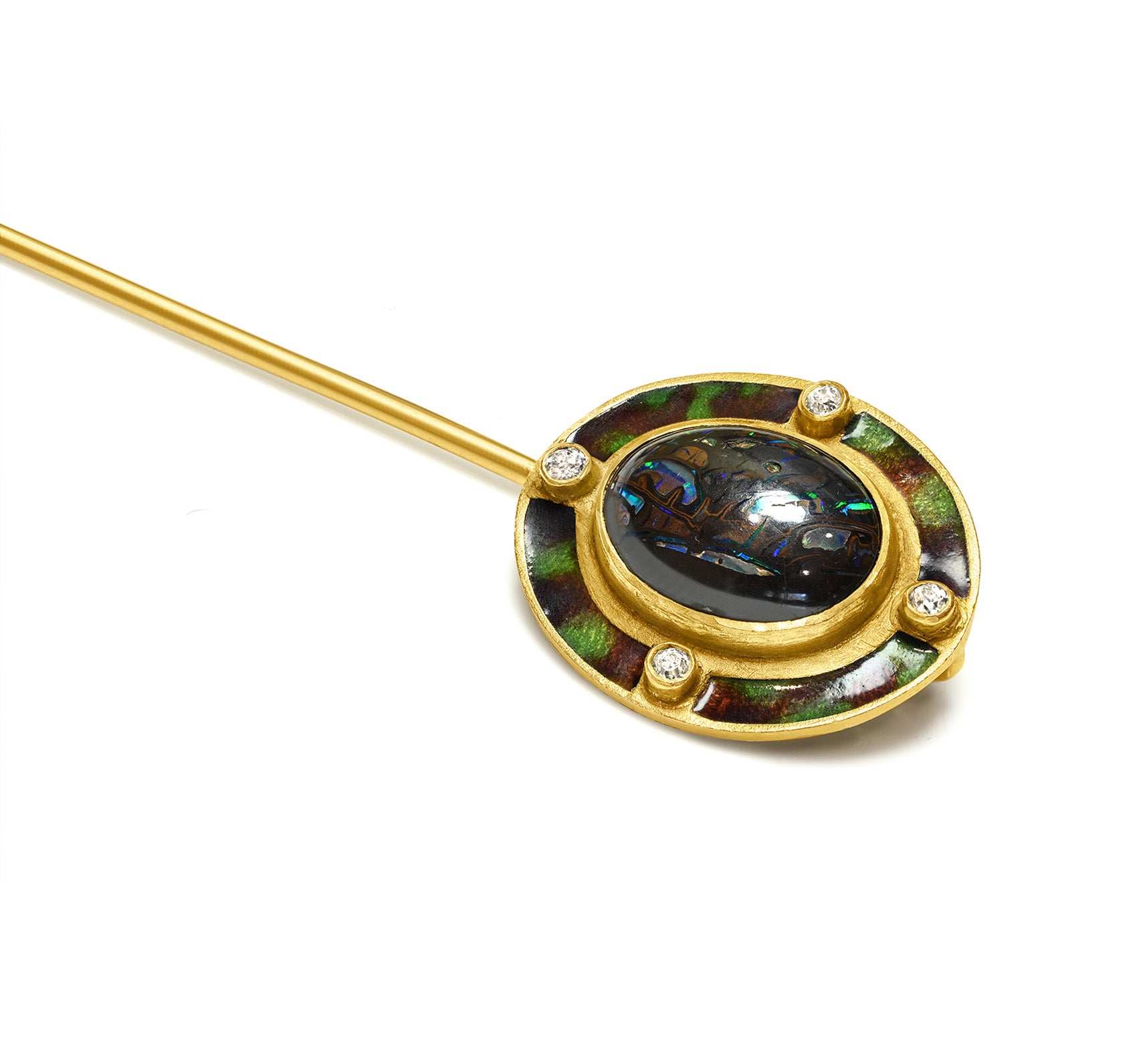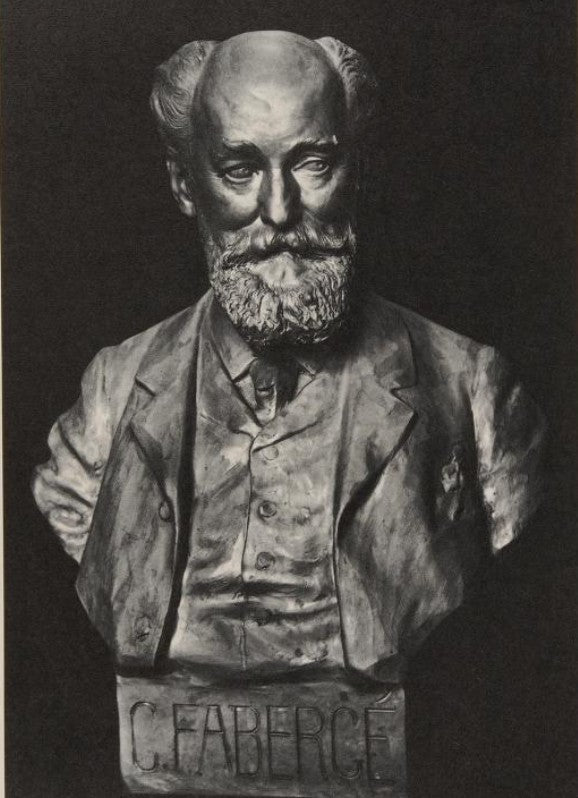
Fabergé’s Silver & Enamel Mastery: Secrets of a Legendary Workshop
Discover the secrets behind Fabergé’s silver and enamel masterpieces—where Imperial elegance meets unmatched craftsmanship.
When the name Fabergé is mentioned, most minds drift instantly to the famous Imperial Easter eggs—opulent, gem-studded symbols of Romanov grandeur. And yet, these legendary eggs account for less than 1% of the firm’s vast production.
Beyond the Fabergé Imperial Easter Eggs
In truth, Fabergé’s workshops created over 150,000 objects, including jewelry, silver, whimsical fantasy items, hardstone figures, flower creations, and animal figures, under the leadership of Carl Fabergé and his team of over 500 master artisans.
Everyday items like cigarette cases, tea sets, or letter openers were elevated into collectible art pieces, infused with humor, delicacy, and bold design. Fabergé did not simply decorate—he reimagined utility as elegance.
What made these creations extraordinary was not always their material value, but rather their transformative artistry.
This article explores how Fabergé revolutionized the fields of silversmithing and enameling. From his secrets in transparent guilloché enamel to the dazzling use of varicolored gold, we’ll discover how even the most ordinary object could become a masterpiece in the hands of his artisans.
Along the way, we’ll delve into the techniques, materials, and creative vision that earned Fabergé his enduring place in the pantheon of decorative arts.

Silver Pike Bowl by Fabergé / Gerald M. de Sylvar

Style-Moderne Clock by Fabergé / The Forbes Magazine Collection, New York
A Visionary Workshop: Art Beyond Material Worth
Carl Fabergé’s brilliance lay not in the ostentation of precious stones and costly materials, but in his profound understanding of craftsmanship and design.
Unlike many contemporaries who relied on the intrinsic value of gold, platinum, or diamonds, Fabergé emphasized innovation, meticulous attention to detail, and artistic originality. His objects gained value through their aesthetic and technical perfection rather than their material worth.
His workshops, both in St. Petersburg and Moscow, became legendary spaces where over 500 skilled artisans collaborated under the direction of iconic head workmasters such as Michael Perkhin and Henrik Wigström.
These famous craftsmen didn’t just execute designs—they elevated them, pushing traditional techniques to new heights and infusing every object, no matter how small, with distinctive charm.
Fabergé’s commitment to artistry extended even to seemingly trivial items: desk sets, picture frames, or tableware. Each was treated as a unique canvas where materials like silver, gold, enamel, and even wood or copper were blended creatively.
The result was a captivating collection of functional art objects that captured the hearts and imaginations of aristocrats and wealthy patrons throughout Europe.

The enamel firing kiln at the St. Petersburg workshops / The London studio of the modeler A. Pocock, 1914

Two examples of enamelwork produced by the Fabergé workshops
The Art of Silversmithing at Fabergé: Utility Transformed
At both the St. Petersburg and Moscow workshops, silversmithing became an elevated form of expression, where functional objects transcended utility, turning into symbols of sophistication and wit.
Fabergé's silversmiths skillfully employed techniques such as casting, chasing, repoussé, engraving, and oxidizing. These methods allowed them to create intricate textures and detailed motifs, from the delicate floral patterns adorning flatware to the lifelike scales of a pike-shaped bowl.
This meticulous craftsmanship resulted in pieces of remarkable beauty, weight, and tactile quality—objects distinguished from competitors simply by being held.
Among the most captivating silver works produced by Fabergé were objects that blended practicality with whimsical realism. Wine pitchers shaped as dachshunds and table lighters modeled as animals added a playful elegance to aristocratic dining tables, proving Fabergé’s talent for turning everyday items into conversation pieces.
Fabergé’s ability to seamlessly merge functionality with artistic flair was unparalleled. Tragically, much of Fabergé’s monumental silverwork was lost following the Russian Revolution, melted down to mint silver rubles in the 1920s.
What survives today, primarily smaller pieces like flatware, tea sets, and samovars, continues to bear witness to Fabergé’s extraordinary creativity and the artisans’ dedication to transforming silver from mere metal into lasting artistic statements.

Silver Dachshund Decanter by Fabergé / Russian Imperial Treasures Inc. The Schaffer Collection - Geri Forrester
Fabergé’s Enamel Mastery: Secrets of the Guilloché Technique
The true pinnacle of Fabergé’s technical and artistic genius was his mastery of guilloché enamel—a method that became synonymous with the firm itself.
Drawing inspiration from exquisite 18th-century French snuffboxes in the Imperial collections, Fabergé and his craftsmen took enameling to unprecedented levels of complexity and elegance, carefully safeguarding their methods as closely-guarded trade secrets.
Guilloché enameling involved engraving intricate patterns onto gold or silver surfaces using a specialized machine known as a tour à guilloché. Patterns like sunbursts, waves, and moiré motifs were meticulously etched into the metal. Subsequently, the engraved surface was coated with multiple layers of glass-like enamel, each tinted with mineral pigments.
Fabergé’s workshops perfected this demanding process, often applying as many as seven distinct layers, each fired at progressively lower temperatures to achieve perfect translucency and depth.
What set Fabergé apart was the breathtaking palette of enamel hues—totaling around 145 unique colors—that his craftsmen developed through tireless experimentation. Notable shades included a refined steel gray and a radiant strawberry red.
Perhaps most famous was the iridescent "oyster-shell" effect, obtained by layering clear white enamel over an orange-tinted base. This layering created an opalescent shimmer reminiscent of natural pearls, elevating even the simplest object into an artifact of refined beauty.
Yet Fabergé’s innovation didn’t stop with technical precision. Many pieces featured miniature paintings—delicate floral motifs, intricate trophies, or even historical palace scenes—hand-painted under the final translucent enamel layer. This allowed enamel surfaces not merely to decorate, but also to tell intricate stories, revealing Fabergé’s belief that true luxury lies in narrative as much as craftsmanship.

Grey and Red Enamel Presentation Cigarette Cases by Fabergé / John Traina, San Fancisco

Diamond-Shaped Clock by Fabergé / Privat Collection, California
Iconic Enamel Creations: Masterpieces of Color and Craft
Fabergé's creative boldness and mastery of enamel are epitomized in iconic pieces such as the celebrated Coronation Box, remarkable for its radiant yellow enamel.
To alleviate the monotony inherent in expansive enameled surfaces, Fabergé’s artisans ingeniously added intricate embellishments, including applied varicolored gold garlands and delicate laurel-leaf borders.
The Coronation Box exemplifies how enamel’s brilliance could substitute for precious gemstones, relying solely on meticulous craftsmanship and inventive design to captivate viewers.

Coronation Box by Fabergé / The Forbes Magazine Collection, New York
Another extraordinary example is a white enamel cigarette case adorned with vivid color discs, an innovative and strikingly creation. This minimalist yet audacious design contrasted brilliantly against the traditional aesthetics of Fabergé’s contemporaries.
Its sleek, white enamel body highlighted the colorful discs inset meticulously, embodying a harmonious fusion of simplicity and sophisticated engineering—complete with invisible hinges and airtight closures.

Aesthetic-Movement Cigarette Case by Fabergé / The Forbes Magazine Collection, New York
Perhaps most compelling of all is the sumptuous Louis XVI-style box, created in 1907 as a gift celebrating the silver wedding anniversary of Prince and Princess Yusupov. Each panel was painted beneath translucent, pale pink opalescent enamel with exquisite depictions of the family’s palaces.
Evocative of 18th-century French snuffboxes, these miniature painted scenes reflected not only technical perfection but also the profound emotional resonance Fabergé could infuse into his objects, transforming them into timeless mementos.
In all these masterpieces, enamel transcended mere decoration, becoming the medium through which Fabergé expressed personal narratives, historic homage, and unparalleled craftsmanship.

The Fabergé Enameling Workshop in St. Petersburg, 1905 / Photograph Courtesy Fersman Mineralogical Institute, Moscow
Varicolored Gold: Painting with Precious Metals
One of Fabergé’s most distinctive innovations was his sophisticated revival and adaptation of the varicolored gold technique, a practice originally popularized by French goldsmiths of the 18th century.
Varicolored gold involved blending yellow gold with small quantities of other metals—silver for a subtle green hue, copper to create warm rose gold, and nickel or palladium for delicate white tones.
Fabergé, however, elevated this classic palette by pioneering rare shades, including nuanced blues, oranges, and steel grays, thus expanding the artistic possibilities of precious metals.
Unlike traditional methods where varicolored elements were chased directly onto an object’s surface, Fabergé developed a technique of applying delicate gold elements—garlands, floral motifs, and intricate scrollwork—using tiny gold pins.
This approach not only allowed for sharper contrasts and more dramatic visual effects but also gave enamel and silver surfaces an additional depth, making every decorative detail stand out with remarkable clarity and finesse.
This intricate interplay of varicolored gold was beautifully showcased on items such as Fabergé’s luxurious cigarette cases. Meticulously engineered, some featured radiating bands of platinum or multicolored gold converging to a precise central point.
The engineering perfection extended even further: lids that closed seamlessly, hinges so finely integrated they became invisible, and closures that emitted a soft hiss of escaping air—testaments to the extraordinary skill and attention to detail within Fabergé’s workshops.
Through this artful and innovative use of varicolored gold, Fabergé not only highlighted his mastery of metallurgy but also redefined the boundaries of decorative arts, turning precious metal into a painterly medium.

Fabergé Showrooms in St. Petersburg, 1905 / Photograph courtesy of the author
Cloisonné Enamel: The Rückert Revolution in Moscow
While Fabergé's St. Petersburg workshops were celebrated for their sophisticated guilloché enamels and pastel transparencies, the Moscow branch proudly revived Russia’s vibrant tradition of cloisonné enamel—a decorative technique rooted in the country's artistic heritage since the 16th century.
Cloisonné involved carefully soldering thin metal wires onto silver or gold surfaces, forming compartments (known as cloisons) that artisans filled meticulously with vividly colored enamel.
Upon firing, these compartments hardened into intricate floral motifs, arabesques, and ornamental patterns of exceptional beauty and complexity. The Moscow workshops owed much of their fame in cloisonné enamel to one exceptional enameler: Fedor Rückert.
Strongly influenced by the organic fluidity of Art Nouveau, Rückert revolutionized traditional Russian cloisonné by transforming the wire frameworks themselves into dynamic, expressive forms—spirals, pellets, and flowing curves—infusing each piece with remarkable movement and life. His style represented a bold departure from the rigid symmetry that had previously defined Russian cloisonné.
Fedor Rückert’s artistic revolution extended even further through his distinctive color palette. Instead of the bold, vivid hues typical of Russian cloisonné, he introduced softer pastels—cream, pale blue, olive green, and subtle grays—creating harmonious contrasts rarely seen before.
Additionally, Rückert innovated by integrating cloisonné with enamel en plein, painting miniature panels featuring evocative scenes from Russian folklore, mythology, or historical narratives directly within the enamel. His daring combinations, occasionally juxtaposing black cloisonné enamel with soft polychrome shades, resulted in dramatic visual contrasts.
Through Fedor Rückert’s innovations, cloisonné enamel in Moscow not only experienced a revival but underwent a genuine evolution. His works, emblematic of Fabergé’s inventive spirit, merged traditional Russian artistic heritage with the dynamic creativity of modern decorative arts, securing Fabergé’s Moscow branch a unique and distinguished place in the history of enamel craftsmanship.

Imperial Polar Star Clock by Fabergé / The Forbes Magazine Collection, New York

Pink Enamel Lapel Watch by Fabergé / Private Collection, New York
White Enamel Cufflinks & Red Enamel Cufflinks by Fabergé / Dorothy Kingery, Estate of James A. Williams
Rare Techniques: Samorodok and Niello
Beyond his renowned enameling, Fabergé also revived lesser-known decorative techniques that brought striking textures and contrasts to his creations.
One such remarkable method was samorodok, a traditional Russian technique that translates literally as "raw nugget." This involved heating gold or silver nearly to melting point, then rapidly cooling it, producing an irregular, organic surface resembling naturally occurring gold nuggets.
The result was an artful juxtaposition: raw texture combined with refined craftsmanship, often applied to objects such as cigarette cases, creating a distinctively tactile aesthetic.
Another rarely employed, yet visually compelling technique was niello, a blackened alloy of silver, copper, and lead sulfides inlaid into engraved patterns on silver objects. Though used sparingly by Fabergé, niello provided striking visual contrast, enhancing intricate engravings with deep, lustrous black outlines.
One notable example crafted in the Moscow workshops was a Louis XV-style milk jug designed to complement an 18th-century tea set, elegantly bridging historical references with contemporary craftsmanship.
Fabergé also introduced innovative surface treatments, such as oxidizing silver to create a rich, matte patina, adding depth and drama to his designs. Paired with burnishing, chasing, and embossing, these techniques transformed everyday items—like tea sets and desk accessories—into exceptional artistic statements, celebrated both for their beauty and their technical sophistication.
Through his daring revival and adaptation of these rare techniques, Fabergé further expanded the vocabulary of decorative arts, proving that true luxury resides not merely in precious materials but in extraordinary skill and creative ingenuity.

Yusupow Music Box by Fabergé / Hillwood Museum, Washington D.C.
Fabergé’s Art: Craftsmanship that Shaped History
Fabergé's innovative approach to silver, enamel, and varicolored gold was more than just a stylistic choice—it was a conscious break from conventional decorative arts.
His commitment to quality and detail wasn't limited to grand commissions; it extended to every small object emerging from his workshops. Each piece represented a dedication to perfection and originality, reflecting both artistic inspiration and meticulous craftsmanship.
The cultural impact of Fabergé’s creations resonated far beyond Russia’s aristocratic circles. European royalty, wealthy American industrialists like J.P. Morgan Jr., and international collectors competed fiercely to own Fabergé masterpieces.
His works became coveted diplomatic gifts, subtly weaving artistry into the fabric of international relations, as exemplified by the exquisite snuffbox presented to Bismarck by Tsar Alexander III.
Even today, Fabergé’s legacy remains vibrant. Collectors and museums treasure his creations not merely as luxury objects, but as historical artifacts that encapsulate the grandeur, ingenuity, and cultural shifts of an entire era.
Exhibitions around the world continue to celebrate Fabergé's unmatched mastery, introducing new generations to the timeless beauty of his art. Fabergé's true legacy, however, lies in his enduring message: that genuine artistry transcends material worth.
By transforming silver, enamel, gold, and everyday objects into extraordinary creations, he redefined luxury itself—shifting its essence from mere wealth to imaginative elegance, and from ostentation to refined beauty.
Contemporary designers and jewelers frequently draw inspiration from Fabergé’s pioneering techniques, reaffirming his lasting impact on decorative arts worldwide.

Enamel Jade Presentation Box by Fabergé / Private Collection, New York
Did You Know? Fascinating Facts About Fabergé
- Less than 1% of Fabergé’s 150,000 creations were Imperial Easter Eggs, despite their global fame.
- Fabergé’s silversmiths once crafted whimsical silver objects like a wine decanter shaped as a dachshund and a realistic bowl in the form of a pike.
- Many Fabergé objects survived the Russian Revolution precisely because of their low intrinsic value, rather than artistic merit alone.
- The famous financier J.P. Morgan Jr. purchased delicate Fabergé brooches as gifts for his daughters, demonstrating the international appeal of Fabergé craftsmanship.
- Fabergé’s workshops developed an unprecedented palette of 145 enamel colors, including elegant steel gray and luscious strawberry red.
- A closely guarded Fabergé innovation, known as “oyster enamel,” produced a unique iridescent, pearl-like shimmer by layering translucent white enamel over an orange-tinted base.
- Fabergé once cleverly transformed ordinary desk accessories—like stamp-moisteners, glue pots, and paper knives—into luxurious, collectible art objects.

Imperial Bridal Fan by Fabergé - The Matilda Geddings Gray Foundation Collection
- Fabergé by Geza von Habsburg - Geneva, Feldman Editions, 1988.
- Fabergé: Fantasies & Treasures, by Géza von Habsburg-Lothringen, New York, 1995.

